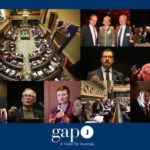Autism, choice and control under the NDIS
The NDIS (National Disability Insurance Scheme) is an opportunity for people with Autism to speak out and secure the support they need to live their life and to attain their goals. Nancy Sadka explains how funding under the NDIS is shaped with a person-centered plan.
“I would like to invite you to my life plan meeting on Thursday, February 2, 20…. We will start at 7:00 pm and you will meet the people who are important to me at this stage of my life. The purpose of this meeting is to create a circle of support to help me put in writing my goals and my dreams for my life and how I can accomplish them. Here are some questions you can think about that will help fulfil that purpose… Thank you for being part of my life.”
The above is an invitation I received from a young adult with severe Autism and Intellectual Disability to attend his person-centered planning meeting. I had the privilege to witness first-hand how representatives from five different organisations came together one evening for three hours to discover who he is, to discuss with him his goals and dreams, and how to best support him. The people attending the meeting were support workers, team leaders in disability services, friends, and family.
I watched with intent as this remarkable non-verbal young man used his facial expressions and his body language to exercise his right to choose and to assert his opinions. The whole process stemmed from three distinctive blocks that laid the foundation for his person-centered plan. It is that plan that will shape his funding under the NDIS.
The first block was acknowledgment
The recognition of this young man’s rights, authority and his status as an individual; his right for education, employment and access to the community. These are fundamental rights for any individual, regardless of whether she or he is living with or without a disability. Those present talked to him and about him by sharing information, strategies for what works, and what is important for him now and into the future. And as the evening progressed, the discussion peeled away the layers of Autism and pre-conceived ideas to reveal the individual who shone through.
The second block was attitude
Acknowledging this young man strengthened his attitude towards making choices and voicing his opinions. He rocked gently, leaned forward with a smile on his face as he turned his head and waved his hand to show his approval of an idea, an activity or a discussion. He equally showed with passion his disapproval when he stopped rocking and tensed up both hands into a fist. He grimaced and vocalized softly but intensely: “No no no no.” His attitude was louder than words.
The third block was advocacy
Advocacy, which by definition is to plead the case of the individual, to be the voice of the ones who can’t speak for themselves. It is not about making choices for them but facilitating the planning process to enable them to make a choice. It is not a task allocated to parents and care givers only, but a task for every person in society: the NDIA planner, the team leader, the teacher, the therapist, the bus driver, the police officer, the shop keeper, the neighbour, and yes, even the politician. The extent to which the voice of the individual with Autism is heard depends on the determination of his advocates.
The NDIS is an opportunity for individuals with Autism to speak out and secure the reasonable and necessary funding they need to live their life and to attain their goals. It is an opportunity to push the boundaries and find that delicate balance between routine, rigidity and anxiety which are at the core of the disability and fund the support needed to achieve the goals of secure employment, continued learning, and access to the community.
To check to see if you are eligible for the NDIS and for resources for planning, please follow this link.
Dr Nancy Sadka works at the Olga Tennison Autism Research Centre (OTARC) at La Trobe University as a Research Officer for early identification and diagnosis of Autism.
Dr Nancy Sadka is a Research Fellow at the Olga Tennison Autism Research Centre (OTARC) at La Trobe University in the early identification and diagnosis of autism.
Associate Professor Josephine Barbaro is a Principal Research Fellow and Psychologist at the Olga Tennison Autism Research Centre (OTARC) at La Trobe University in the early identification and diagnosis of autism.














